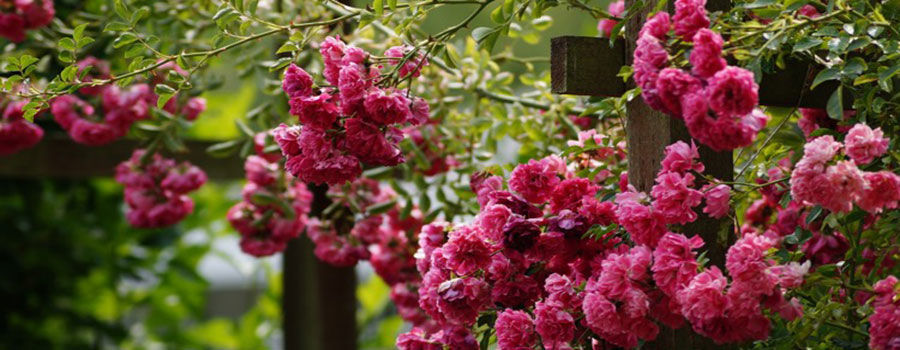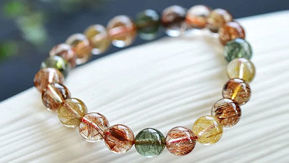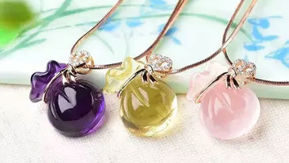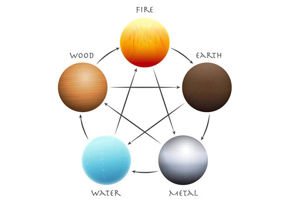
Having perfectly blooming flowers with the bunch of birds singing around, who doesn't want to start the day with such a beautiful aura? A home-garden not only distresses us from the hustles and bustles of our daily life but also brings us closer to nature. People nowadays favor having a green area in their home where they can spend time maintaining the plants and can sit in the lap of scenery. Distinctly, we all love to do hard work to cherish colorful flowers and greenery for tomorrow, but equally, hate it when seasonal plants die with the change of temperatures.
Seeing the garden as pale and the plants becoming dull is the worst feeling for a true gardener. Often people leave their passion for gardening just because they see their seasonal plants getting dull and the overall garden standing as blank. To get the perfect solution for these situations of weather and temperature changes, we have some of the evergreen vines which can add colors to your home or garden area with their amazing growing patterns throughout the year.
Here we have 10 best evergreen vines to make your gardening charm as never-ending and exciting experience.
- Fiveleaf Akebia or Chocolate Vine
Evergreen for the areas with a milder climate, you can plant Fiveleaf Akebia to forget about the blankness-worries in your garden. Featuring bluish-green foliage, it blooms the light fragrant clusters of pink or purple flowers in the mid to the spring. This twining vine loves to face the sun and just in a few days grows up to 30 feet. Since the growth of the chocolate vine is kinda fast, it works excellently for covering the fences, arbors, pergolas or trellises. Moreover, it can also provide you edible seedpods similar to the taste of tapioca pudding, but for that, you will be required to plant more than one vine at a place.
- Bougainvillea
Ideal for covering the windows and the greater area of the side lobbies, bougainvillea easily touches the 20-30 feet mark with its dense spread. It blooms impressive vivid-pink flowers and love to get an extended exposure from the sun. Available in a variety of colors and types, you can also go for the dwarf- forms or the ground cover if you don't want to monster plant. These plants love water till the time they grow well, later they become drought tolerant.
- Rosa Banksiae "Lutea"
Renowned for producing beautiful buttery-yellow flowers, Lutea happily blooms in spring and early summer. As it's not self-supporting, you will require some structure or trellis to provide a gentle support to its slender branches. With the full growth, these dry roses reach to the height of 15-20 feet and spread wide to around of 6-10 feet. Its pale yellow, multi-petalled, 3/4 inch wide double flowers are perfect to give anyone a soul-satisfying peace. Slender branches are thornless which cuddles the rich green foliage of tiny, smooth-edged leave and displays the ultimate beauty of nature.
- Gelsemium Sempervirens or Carolina Yellow Jasmine
Twining vine with trumpet-shaped yellow flowers, Gelsemium Sempervirens love to spread and reach the heights of 20 feet quickly. It blooms well in early spring or later winters with its yellow producing light lemony fragrance. Love to be grown in the gardens or the entrance of the home, this vine also serves the indoor need if given a proper care in pots and hanging baskets.
- Jasminum Polyanthum or Pink Jasmine
Opposite to its name, the flowers on Pink Jasmine are more like white than pink. It blooms well from spring to the midsummers and spread its fragrant flowers to the height of 20 feet. Thrive best in the sun, this plant just grows and grows. Each day you will feel it denser and once mature the subsistence is quite low.
- Clematis Armandii
Prized and praised by the gardeners for its ultimate showy flowers, Clematis Armandii produces 2.5-inch white flowers that bear fragrance in the late spring. Not just the flowers, the dark green leaves of this plant also add a different charm to its overall beauty. It grows well and looks best, but to note, most of its species are toxic.
- Virginia Creeper
If you need shaded three, five or seven leaflets leaves that can cling well to the wall and other surfaces, go for Virginia Creeper. It grows wildly well and can even cover the most of your garden or the front face of your home. This vine produces small greenish flowers in late spring and hard purplish-black berries that attract a lot of birds and bees around.
- Wisteria
This vine loves the sunny environs and grows best in the well-drained but moist soil. It rises as high as 66 feet and prefers to climb the walls, trees, and trellis. Wisteria floribunda and Chinese wisteria are two invasive species of wisteria that are typically famous for home gardens. The beautiful lavender or violet-blue flowers of this lovely vine blooms in mid-late spring. While growing Wisteria is quite easy, but proper care should be given as it slowly covers all the area around.
- Jasminum Nudiflorum
Having none of the characteristic scents from its family, Jasminum Nudiflorum or Winter Jasmine is among the earliest flowering plants that begin to bloom with the start of the New Year. This vine with yellow star-shaped flowers typically spreads around, but if you want to grow it vertically, seek support from the trellis and trim the side shoots to prepare for the more extended base. On an average, it takes the height up to 15 feet.
- English Ivy
The evergreen perennials English Ivy or Hedera helix are suitable for ground covers, but additionally, they are good climbers too. With their aerial rootlets, they cheerfully climb an average height of 50 feet or more. Though their small greenish flowers are insignificant; they are best known for the beauty of their leaves. As this vine grows extremely fast and dense, you can even think to cover the entire wall area with this natural green-cluster.




















